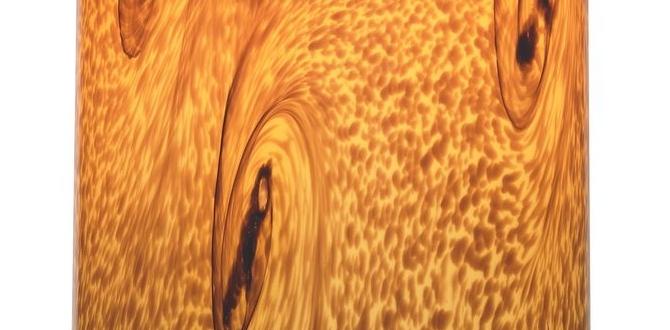Have you ever wondered how a simple flush can be influenced by the Earth’s rotation? This brings us to the **Coriolis effect**. It sounds complicated, but it’s all about how big things, like our planet, spin. Many people ask, “Does the Coriolis effect affect toilets?” It’s a great question!
Picture yourself on a school trip, standing by a giant water fountain. You see the water swirls in a certain way. But what would happen if we moved that fountain to another part of the world? Would the water still swirl the same? This is where the Coriolis effect comes in.
It’s fascinating to think that such a force could change how water moves. Imagine that’s true for toilets too! In your bathroom, does the water spin one way or another? Let’s dive into this mystery and find out how the Coriolis effect really works!
Does The Coriolis Effect Affect Toilets? Exploring The Science

Does the Coriolis Effect Affect Toilets?
Many wonder if the Coriolis effect plays a role in how toilets flush. The truth might surprise you! While it’s a fascinating phenomenon connected to Earth’s rotation, it doesn’t affect toilet flushing in most places. Toilets flush in a circular motion, but local plumbing design, not the Coriolis effect, controls the direction. So, any belief that toilets flush differently in each hemisphere is more myth than fact. Understanding this can change how you think about the world—who knew science could be so puzzling?Understanding the Coriolis Effect
Definition and principles of the Coriolis effect. Historical background and key experiments demonstrating the effect.The Coriolis effect is a force that makes things move in a curved path instead of straight. It happens because the Earth spins. As air and water move, they twist and turn. This effect was named after a French scientist named Gaspard-Gustave de Coriolis, who studied it in the 1830s. Key experiments, like watching how hurricanes spin, helped prove the Coriolis effect. It shows how Earth’s rotation changes the direction of wind and ocean currents.
How does the Coriolis effect relate to toilets?
The Coriolis effect does not significantly impact toilets. Toilets flush clockwise or counterclockwise mainly due to the design of the toilet rather than the Earth’s rotation.
Scientific Explanation of the Coriolis Effect
Explanation of how the Earth’s rotation influences moving objects. Relationship between latitude and the strength of the Coriolis effect.The Earth spins like a top. This movement creates a force called the Coriolis effect. It makes moving objects curve instead of going straight. For example, in the Northern Hemisphere, they curve to the right. In the Southern Hemisphere, they curve to the left. This effect is stronger near the poles and weaker near the equator. Here’s how it works:
- Earth rotates from west to east.
- Objects move faster at the equator than at the poles.
- The Coriolis effect helps control wind and ocean currents.
Understanding this helps answer questions about weather patterns and even airplanes!
Does the Coriolis effect affect toilets?
No, the Coriolis effect does not affect toilets in any noticeable way. The tiny size of water in toilets and their design make gravity the main force at work.
Coriolis Effect and Water Flow
How water is influenced by the Coriolis effect in large systems (oceans, weather patterns). Comparison of small scale versus large scale systems in observing the effect.Water behaves differently in large systems like oceans and weather patterns due to the Coriolis effect. This effect helps create currents and wind patterns that are crucial for our climate. For example, ocean currents move in a circular path instead of straight lines. This is less noticeable in small systems, like a sink or a toilet. Small-scale water movement does not experience the Coriolis effect the same way. Here’s a quick comparison:
- Large Scale: Influences weather and ocean currents.
- Small Scale: Little to no effect on water flow.
Do toilets get affected by the Coriolis effect?
No, toilets do not significantly get affected by the Coriolis effect. This is because their size is too small compared to large systems. The effect is only noticeable in bigger bodies of water.
The Myths Around Toilets and the Coriolis Effect
Common misconceptions about the effect on flushing toilets. Examination of anecdotal evidence versus scientific findings.Many people believe that the Coriolis effect determines how toilets flush. This is not entirely true. In reality, toilets flush mostly due to how they are designed. Here are some myths and facts:
- Myth: Toilets flush differently in different hemispheres.
- Fact: Plumbing design plays a bigger role than Coriolis.
- Myth: All toilets swirl one way worldwide.
- Fact: Swirl direction varies based on tank size and shape.
Scientific studies show little evidence linking the Coriolis effect to toilet flushing. Instead, there are more important factors at work.
Do toilets really flush the opposite way in the southern hemisphere?
No, toilets do not flush the opposite way just because of location. Flush directions depend on plumbing design rather than geography.
Flushing Mechanisms in Toilets
Different types of toilet flushing designs and mechanisms. Influence of design on wastewater drainage independent of the Coriolis effect.Many toilets use different flushing designs. These designs help water flow effectively. Some common types include:
- Gravity Flush: Relies on gravity to move water.
- Pressure-Assisted: Uses air pressure for a stronger flush.
- Vacuum Flush: Creates a vacuum to pull waste away.
These designs work well, regardless of the Coriolis effect. The way toilets flush depends on their engineering, not the earth’s rotation. This helps keep our bathrooms clean and functional.
Do the flushing mechanisms affect how toilets work?
The flushing mechanism in toilets greatly impacts performance. Different designs lead to better or worse removal of waste. A good flush means cleanliness and efficiency.
Global Variations in Toilet Functionality
Analysis of toilet flushing direction in the Northern vs. Southern Hemisphere. Factors affecting toilet performance beyond the Coriolis effect.Toilets flush differently in the Northern and Southern Hemispheres. In the North, water often moves clockwise. In the South, it may go counterclockwise. However, many factors impact how a toilet works. These include:
- Water design
- Toilet shape
- Water pressure
- Plumbing layout
The Coriolis effect is too weak to matter for normal toilets. It’s interesting to note that most toilets are made to flush one way, regardless of location.
Does the Coriolis effect affect toilets?
No, the Coriolis effect has little impact on toilet flushing direction. Other factors are much more important in determining how a toilet flushes.
Real-Life Case Studies
Examples of toilet performance in different geographic locations. Observations from toilet designs around the world.The performance of toilets can vary greatly depending on where you are in the world. For example, in the U.S., toilets usually flush in a clockwise direction, while some models in Australia swirl counterclockwise. This is often connected to the Coriolis effect, but it’s not the only factor! In Japan, high-tech toilets perform a little dance with features like heated seats and built-in bidets. Who needs a spa day when your toilet offers comfort and clean-up?
| Location | Toilet Design | Flush Direction |
|---|---|---|
| USA | Standard flush | Clockwise |
| Australia | Round bowl | Counterclockwise |
| Japan | High-tech features | Depends on model |
These examples show how toilets are unique to their places. While the Coriolis effect plays a part, local design choices make toilets even more fascinating. Who knew toilets could be so interesting?
Conclusion
In conclusion, the Coriolis effect does not significantly affect toilets. While it influences large weather patterns, toilet water spins due to design. So, your toilet’s swirl isn’t caused by Earth’s rotation. To learn more about science at home, explore how everyday things work. You might be surprised by what you discover!FAQs
How Does The Coriolis Effect Influence The Direction Of Water Flow In Toilets In Different Hemispheres?The Coriolis effect is a force that affects moving things on Earth. In the Northern Hemisphere, it makes water swirl counterclockwise when you flush a toilet. In the Southern Hemisphere, it swirls clockwise. This happens because the Earth spins, and that changes the direction of moving water. So, where you are on Earth can change how your toilet water flows!
Are There Significant Differences In Toilet Design That Account For The Coriolis Effect?Yes, there are differences in toilet design, but they don’t really change because of the Coriolis effect. The Coriolis effect is a natural force that causes moving things to curve because of the Earth’s spin. In toilets, most designs in places like the U.S. or Europe work the same way, regardless of this effect. The shape of the bowl and how the water flows matter more than the Earth’s spin. So, while it sounds cool, the Coriolis effect isn’t why toilets flush differently.
Can The Coriolis Effect Be Observed In Small-Scale Systems Like Toilets, Or Is It Only Significant In Larger Systems Like Weather Patterns?The Coriolis effect is very weak in small things like toilets. You can see it better in big things, like weather patterns. In toilets, other factors matter more than the Coriolis effect. So, we can’t really notice it when you flush.
What Factors, Besides The Coriolis Effect, Affect The Direction Of Toilet Bowl Drainage?Besides the Coriolis effect, several things affect how toilet water drains. First, the shape of the toilet bowl matters. If the bowl is round or oval, it can change the water’s path. Second, the angle of the drain can make a difference. Lastly, how the water fills the bowl also influences how it swirls down. All these factors work together to decide which way the water goes!
Is There Any Scientific Evidence Supporting The Claim That Toilets In The Northern Hemisphere Flush In A Different Direction Than Those In The Southern Hemisphere?Toilets do not really flush in different directions because of where they are on Earth. The idea comes from a rule about how water moves in big circles called the Coriolis effect. But toilets are small, so they don’t follow that rule. Instead, the way a toilet flushes depends more on how it was designed. So, there’s no strong science to say they flush oppositely in the two hemispheres.








